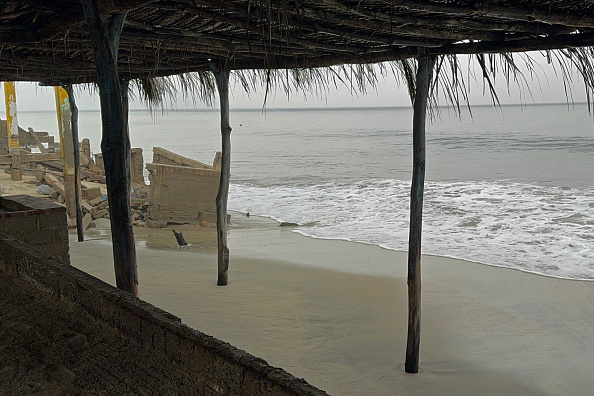On Monday night, Hurricane “John” rapidly intensified from a tropical storm to a strong hurricane within a few hours before hitting the southern Pacific coast of Mexico, potentially triggering life-threatening floods.
Hurricane “John” made landfall near Punta Maldonado in southeastern Mexico with the intensity of a Category 3 hurricane, with maximum sustained winds reaching up to 120 mph (190 km/h). Its swift intensification prompted authorities to take emergency action, warning the population about the potentially destructive impacts.
Mexican President Andrés Manuel López Obrador urged coastal residents to move to higher ground for their safety, emphasizing that protecting lives is paramount above all else. He stated, “Protect yourselves, do not forget that life is the most important; material possessions can be replaced.”
The rapid strengthening of Hurricane “John” in just a few hours surprised scientists, authorities, and local residents. Matt Benz, a senior meteorologist at the commercial weather service company AccuWeather, attributed this to the warm ocean providing additional energy to the hurricane.
Benz highlighted that the unexpected intensification of hurricanes is becoming more common, surpassing historical records. He noted, “These are storms we haven’t truly experienced before. Rapid intensification is happening more frequently in modern times than in historical records, indicating that there are some changes occurring.”
According to the National Hurricane Center of the United States, by early Tuesday, Hurricane “John” had weakened to a Category 2 hurricane, with maximum sustained winds dropping to 100 mph (160 km/h). It was projected to impact Punta Maldonado, along with the nearby touristic destinations of Acapulco and Puerto Escondido before weakening over inland highlands.
The center reported that before “John” made landfall, life-threatening storm surges, lightning, and floods had already caused damage along the Pacific coast near Oaxaca, Mexico.
Benz expressed concerns about the hurricane slowing down after landfall, potentially causing more significant damage as it lingers over coastal areas.
The changes in weather forecasts and the response measures implemented by authorities have left residents of coastal cities in Oaxaca feeling anxious.
Local federal civil protection coordinators urged residents of Pacific coastal cities to evacuate their homes and seek refuge in shelters to protect themselves and their families.
The local government ordered the suspension of all non-essential work at major beaches and temporary closure of schools in some coastal areas.
The Governor of Oaxaca State mentioned that the state government had evacuated 3,000 people and set up 80 shelters, deploying 1,000 military personnel and state officials to address the emergency.
Some residents expressed unease and anxiety as the official notifications came swiftly, leaving them no time for necessary preparations.
This hurricane poses a heavy blow to the Oaxaca region, which previously faced a similar rapidly intensifying hurricane named “Otis” last year.
“Otis” devastated the resort city of Acapulco, with residents encountering the strong storm with little to no warning.
“Otis” caused prolonged power outages in the city, with bodies of victims scattered along the coast. Most areas of the city descended into chaos, with thousands of people rummaging through shops, scrambling for food and water.
Mexico’s President-elect Claudia Sheinbaum stated that her government plans to enhance early warning systems, similar to the country’s existing earthquake alert system.
(By referencing reports from The Associated Press)

